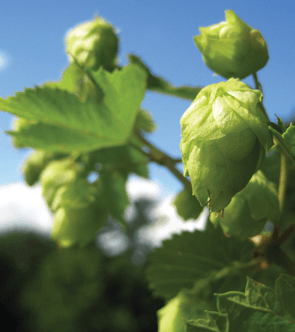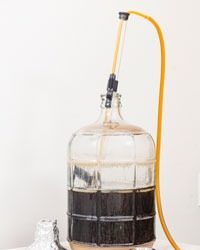Using Fresh Hops for Beginners

Generally, hops are harvested, dried, and compressed into bales. Over the course of the year the bales are broken apart and the whole hops are milled and pelletized and then vacuum-packed to be sold as hop pellets. Much like fresh produce that has been frozen, hops are sure to lose a little bit of the freshness quality as they age. Fresh hopping can give your beer a more vibrant hop aroma and taste, however little scientific research into the variation of aroma compounds in fresh hops compared to dried hops has been done, as Stan Hieronymus points out in his book For the Love of Hops. “Results of studies that track how dramatically essential oils change in the days before hops are picked imply that wet hops, which do not contain the same oxygenated fractions as kilned hops, may produce different odor compounds than those that are dried. Unfortunately, no similar studies about wet hops have been published,” Hieronymus states.
Most brewers stick to dried hops at the beginning of the boil to extract bitterness in their harvest beers and then use fresh hops near the end of the boil, in a whirlpool, or for dry hopping in the secondary fermenter. One reason fresh hops are not often used to add bitterness is that the alpha acid content of the hops is unknown. One of the great things about homebrewing is you can experiment with small batches and determine when, and in what quantity, fresh hop additions work best! A word of caution though, using too many fresh hops can give a beer a “grassy” taste. Some homebrewers on the Internet warn against using fresh hops to dry hop, however Ashton Lewis, BYO’s own Technical Editor and Mr. Wizard, says neither drying nor freezing hops will reduce the microbiological load on hops and there should be no microbiological concerns when using fresh hops in the secondary. “The truth is that dry hopping is not implicated with causing micro problems in beer,” he states. The bigger concern, he says, is that fresh hops may impart more “grassy” aromas than desired for some beers, which is a good argument for adding fresh hops to the kettle instead.
One of the most important things to take into consideration when using fresh hops is the weight differential between them and those that have been dried. According to Mark Garetz’s book Using Hops: The Complete Guide to Hops for the Craft Brewer, hops fresh off the bine are 80% percent moisture, but when dried the moisture content is just 8%. With that water weight adding nothing in the way of taste or aroma, brewers often use anywhere from 5 to 8 times as much fresh hops (in weight) as dried hops. For instance, if a recipe calls for 1 oz. of dried hop pellets at knockout, you will want to add 5 to 8 oz. of fresh hops in their place to impart the same effects.
Harvest beer has become a common theme among craft breweries late in the fall and early winter each year, made popular after Sierra Nevada Brewing released Northern Hemisphere Harvest Ale in the mid ‘90s. The technique is most common in beer styles you want a great hop aroma in — India pale ales, and pale ales are most common.



